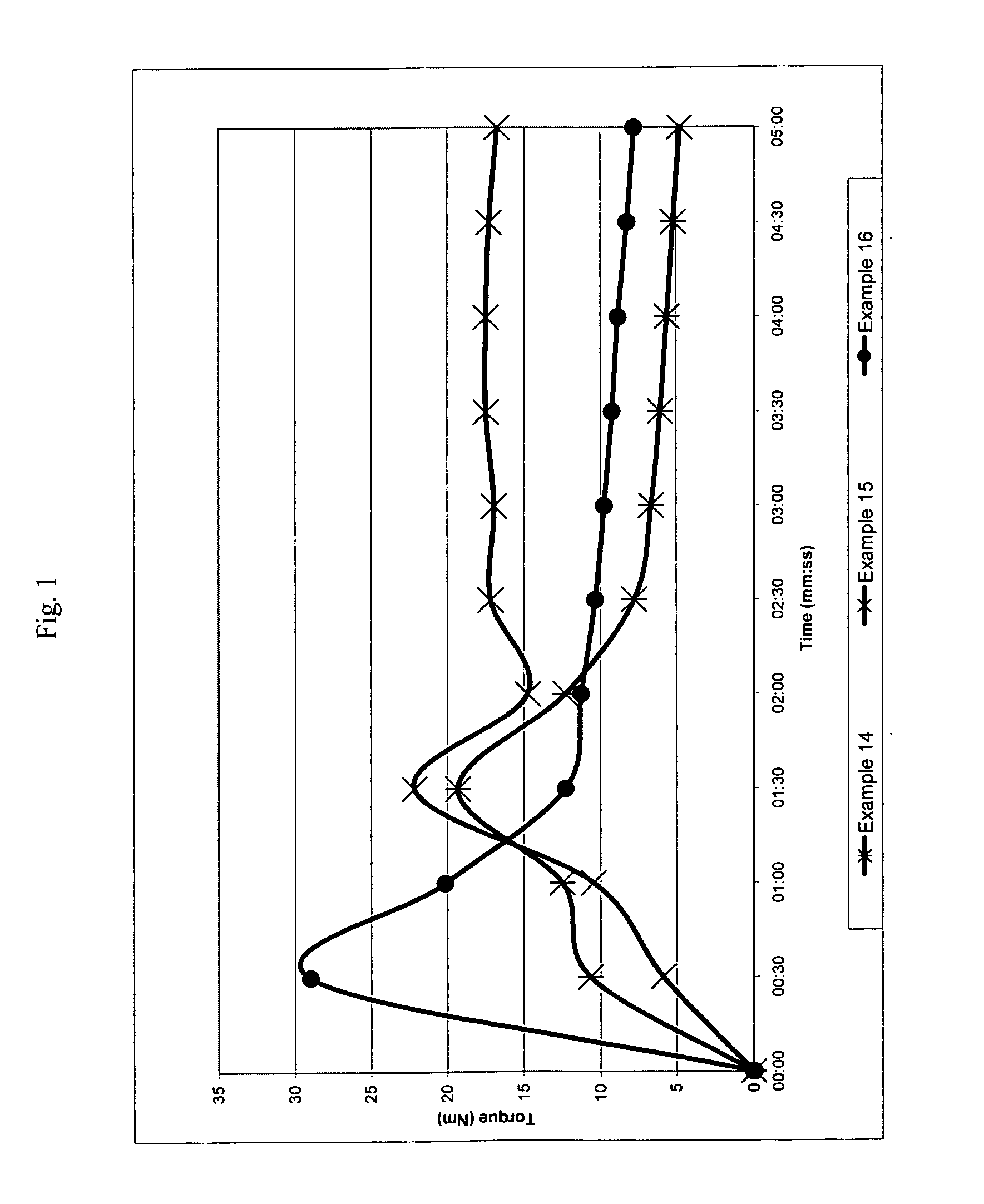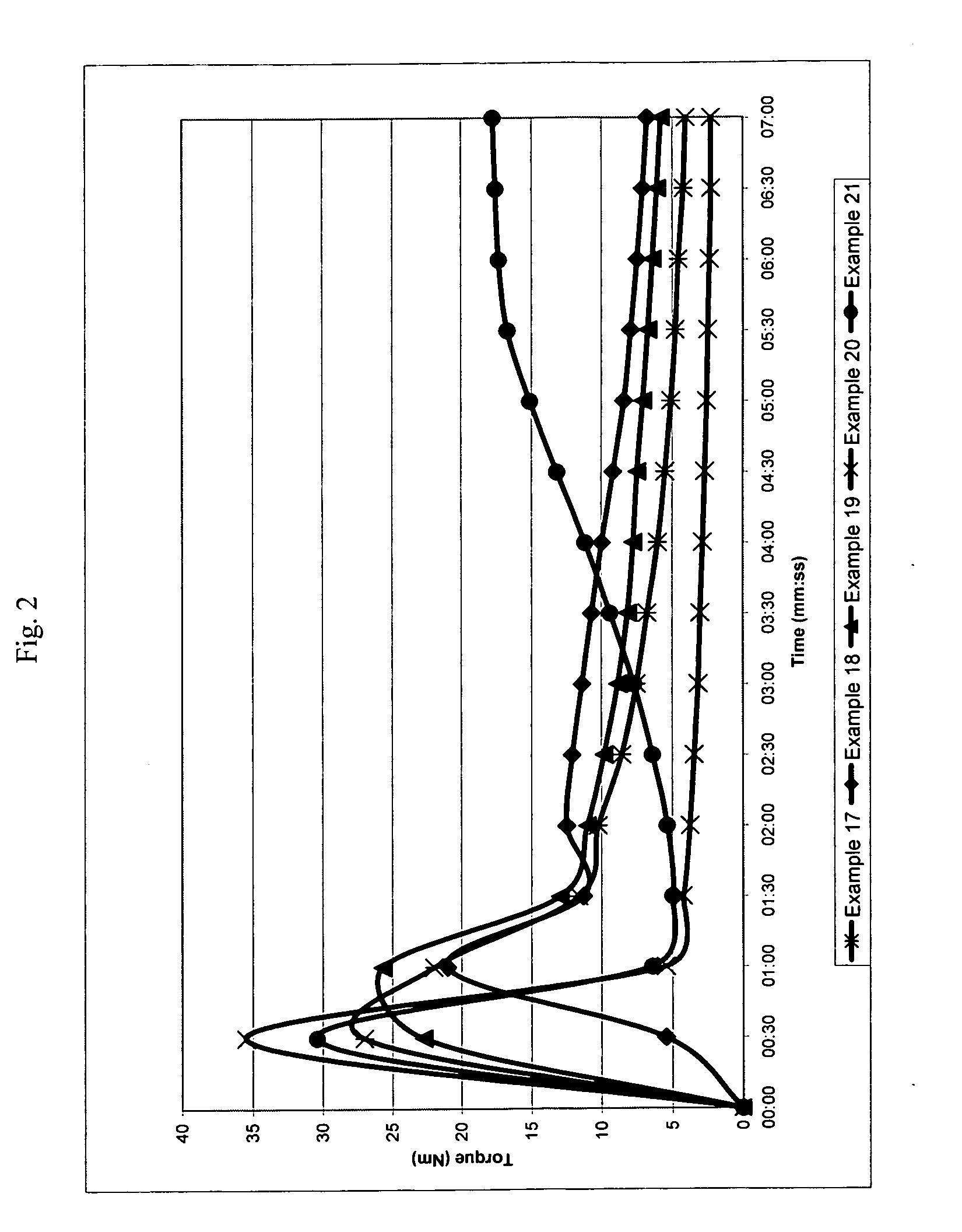Using Reactive Block Copolymers as Chain Extenders and Surface Modifiers
a reactive block and copolymer technology, applied in the field of reactive block copolymer as chain extender and surface modifier, can solve the problems of product discoloration, difficulty in recycling used products and containers into high-value products, and numerous reports of problems or disadvantages, and achieve the effect of increasing the average molecular weight of a polymer material
- Summary
- Abstract
- Description
- Claims
- Application Information
AI Technical Summary
Benefits of technology
Problems solved by technology
Method used
Image
Examples
examples
[0239]The following examples illustrate a number of aspects of the present invention with respect to chain extension. Examples in parent U.S. patent application Ser. No. 11 / 508,407 filed Aug. 23, 2006, which was published as U.S. Publication No. 2007 / 0049696 A1, pertain to compatibilization applications for the present invention and are incorporated by reference. A wide variety of properties can be obtained in different blends by merely changing the molecular weight of the reactive block copolymer (which is referred to as the chain extender or the compatibilizer), the amount of reactive monomers and the conversion of the first block. The following examples illustrate the invention in more detail, but they should not to be construed as limiting the present invention to the particular examples provided. The scope of the invention is properly determined by the claims that are ultimately under consideration.
[0240]A. Preparation of Reactive Block Copolymer Chain Extenders
[0241]Reagents: ...
examples 1-7
[0242]General Procedure (see Table 1 for the amount of reagents in each example). Styrene (St), glycidyl methacrylate (GMA), nitroxide and initiator (benzoyl peroxide, BPO) were placed in a double jacket glass reactor and oxygen was removed with nitrogen bubbling for 3 minutes. Oil was preheated to 130° C. and then circulated through the outside jacket, and the mixture was stirred at 145 rpm. After the desired conversion was reached in 17-20 hours, heating was suspended and additional styrene was added to the reactor with stirring. After 3 min. of stirring, the reaction was either continued in the glass reactor until 10-20% more conversion was reached or directly poured into a second reactor. Nitrogen was bubbled through, and the reactor was immersed in an oil bath, which was previously heated to 125-130° C., for 16-24 hours to reach the desired conversion. Total reaction time for steps one and two ranged from 33 to 44 hours.
TABLE 1Reactive block copolymers. First-step composition.F...
examples 8-13
[0246]General procedure. PETr1 and the block copolymer were mixed in a torque rheometer (Brabender Plastograph EC, and a 30 / 50EHT mixer) at 80 rpm and 270° C. for 7 minutes. The blend was cooled and the intrinsic viscosity (IV) was determined. Results are shown in Table 4. The intrinsic viscosities were determined with a Glass Capillary Viscometer Ubbelohde (ASTM D 4603-03).
TABLE 4Intrinsic viscosity of PETr1 mixed with reactive block copolymers.BlendsDiblockExampleCopolymerDiblockNumberPETr1 (%)ExampleCopolymer %IV (dL / g)8100—00.692995150.7001095250.7201195350.7511295450.7491395550.715
[0247]A viscosity increase is observed in all cases, showing the good performance of reactive block copolymers as chain extenders, since one can infer that the molecular weight of the recycled PET increased as the intrinsic viscosity increased. The highest increase in viscosity for this series of examples is observed when the diblock copolymer from example 3 is used. In order to demonstrate that the p...
PUM
| Property | Measurement | Unit |
|---|---|---|
| contact angle | aaaaa | aaaaa |
| contact angle | aaaaa | aaaaa |
| temperatures | aaaaa | aaaaa |
Abstract
Description
Claims
Application Information
 Login to View More
Login to View More - R&D
- Intellectual Property
- Life Sciences
- Materials
- Tech Scout
- Unparalleled Data Quality
- Higher Quality Content
- 60% Fewer Hallucinations
Browse by: Latest US Patents, China's latest patents, Technical Efficacy Thesaurus, Application Domain, Technology Topic, Popular Technical Reports.
© 2025 PatSnap. All rights reserved.Legal|Privacy policy|Modern Slavery Act Transparency Statement|Sitemap|About US| Contact US: help@patsnap.com



